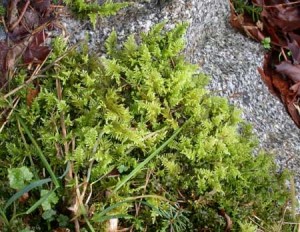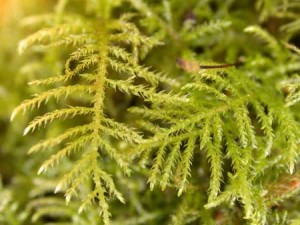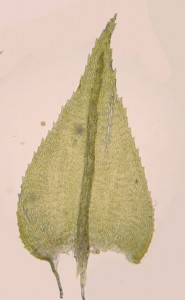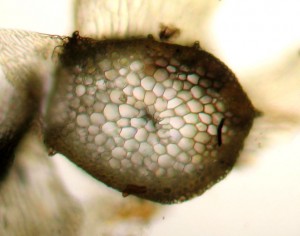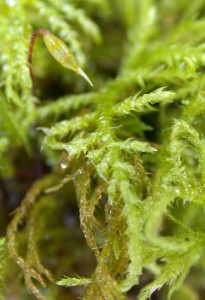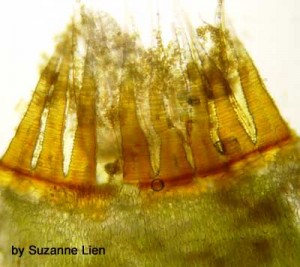Habitat
Kindbergia praelonga can be found in a variety of habitats, though tends be found more often in damper sites than its relative K. oregana (See that species page for comments concerning distinguishing features between the two species). It may be found growing on soil, rotten logs, rocks, or epiphytically on tree trunks.
Gametophyte
Overall Structure:
Kindbergia praelonga exhibits a pleurocarpous growth habit. Shoots form loose to dense green mats. Individual shoots are slenderly branched and multipinnate.
Leaf Structure:
Main stem leaves are squarrose, meaning they are bent at right angles to the stem. They are also broadly ovate in outline, tapering to narrowly acute or sharply pointed apices.
In contrast, branch leaves are relatively narrow and only weakly spreading.
Both stem and branch leaves have small teeth along their margins and a single, strong costa.
Stem:
The stem contains a central conducting strand, surrounded by a thick cortex of parenchymal cells. A thinner layer of thick-walled stereids compose the outer epidermis.
Sporophyte
Maturation of sporophytes occurs in the spring. Sporophytes are reddish-brown when mature.
Sporangium:
The sporangium has an operculum with a long beak or rostrum that is bent downwards.
The peristome is composed of both an exostome and an endostome.
Seta:
The mature seta is rough (papillose).

